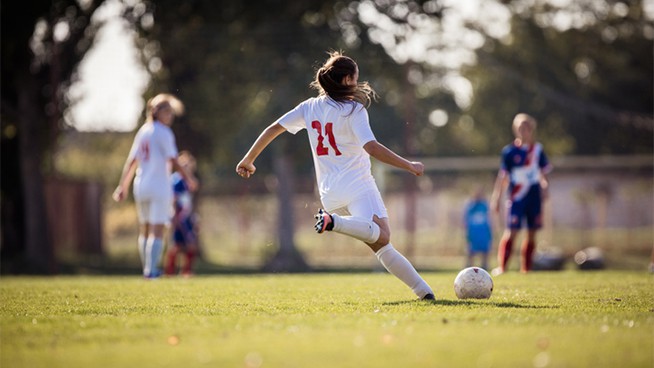This Overlooked Aspect of Sprinting Is the Key to Getting Faster
Your body can experience forces up to three times your body weight when sprinting, according to many reports. You must be able to withstand these forces when you’re sprinting, or else you’ll have a slow and laborsome stride. Not good.
So what’s the key to helping your body handle these forces? It’s an often overlooked aspect of the stride that many athletes and coaches fail to address during their speed workouts.
The answer is leg stiffness.
There are three different types of stiffness—joint, vertical and leg stiffness. They are all essentially the same or present with one another, so I’m going to reference leg stiffness.
To understand leg stiffness, imagine that your legs are springs. A stiff spring is difficult to compress but can release tons of force. A soft spring, on the other hand, compresses easily and exerts less force when released.
You can probably surmise that your legs need to behave like stiff springs to sprint faster. That’s where leg stiffness comes into play. The best sprinters have some bend, but the leg should remain relatively stiff throughout the stance phase of a sprint. They’re able generate stiffness quickly in the foot—notice that elite sprinters supinate the foot as it inverts and have a more pronounced bow-legged posture.
I’ll often see many weak clients collapse—especially at the knee—as they hit the surface, and you’ll see the delay in their next transition. This collapse and extra bend increase ground contact time and energy loss, which slows you down and makes each stride more difficult.
Great athletes and sprinters have excellent leg stiffness because they are strong, either naturally or from their training.
So first and foremost, you need to get stronger to increase your leg stiffness and sprint faster. No exceptions.
You also need to consciously focus on keeping your hips high and your knees tight and stiff. Any drop will result in a longer time on the ground and greater energy loss since we have to move more to get back up off the ground and into flight again.
Here are three exercises and drills that can help create and reinforce leg stiffness. You can learn how to perform these by watching the demos in the video player at the top of the article.
- Bounds (for distance)
- Four Jumps (for height)
- Depth Jumps
For more tips on speed training, check out my Speed Encyclopedia, which features a comprehensive research-based speed training system for athletes and coaches.
READ MORE:
[cf]skyword_tracking_tag[/cf]RECOMMENDED FOR YOU
MOST POPULAR
This Overlooked Aspect of Sprinting Is the Key to Getting Faster
Your body can experience forces up to three times your body weight when sprinting, according to many reports. You must be able to withstand these forces when you’re sprinting, or else you’ll have a slow and laborsome stride. Not good.
So what’s the key to helping your body handle these forces? It’s an often overlooked aspect of the stride that many athletes and coaches fail to address during their speed workouts.
The answer is leg stiffness.
There are three different types of stiffness—joint, vertical and leg stiffness. They are all essentially the same or present with one another, so I’m going to reference leg stiffness.
To understand leg stiffness, imagine that your legs are springs. A stiff spring is difficult to compress but can release tons of force. A soft spring, on the other hand, compresses easily and exerts less force when released.
You can probably surmise that your legs need to behave like stiff springs to sprint faster. That’s where leg stiffness comes into play. The best sprinters have some bend, but the leg should remain relatively stiff throughout the stance phase of a sprint. They’re able generate stiffness quickly in the foot—notice that elite sprinters supinate the foot as it inverts and have a more pronounced bow-legged posture.
I’ll often see many weak clients collapse—especially at the knee—as they hit the surface, and you’ll see the delay in their next transition. This collapse and extra bend increase ground contact time and energy loss, which slows you down and makes each stride more difficult.
Great athletes and sprinters have excellent leg stiffness because they are strong, either naturally or from their training.
So first and foremost, you need to get stronger to increase your leg stiffness and sprint faster. No exceptions.
You also need to consciously focus on keeping your hips high and your knees tight and stiff. Any drop will result in a longer time on the ground and greater energy loss since we have to move more to get back up off the ground and into flight again.
Here are three exercises and drills that can help create and reinforce leg stiffness. You can learn how to perform these by watching the demos in the video player at the top of the article.
- Bounds (for distance)
- Four Jumps (for height)
- Depth Jumps
For more tips on speed training, check out my Speed Encyclopedia, which features a comprehensive research-based speed training system for athletes and coaches.
READ MORE:
[cf]skyword_tracking_tag[/cf]









